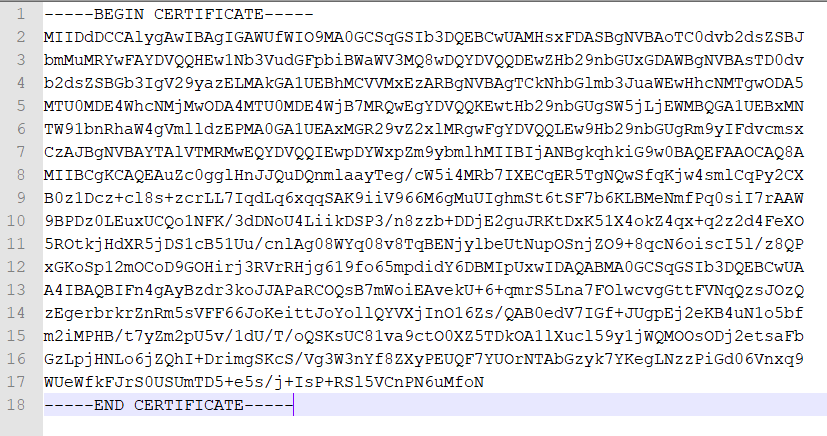

- OPENSSL VIEW PEM FILE DETAILS INSTALL
- OPENSSL VIEW PEM FILE DETAILS CODE
OPENSSL VIEW PEM FILE DETAILS CODE
You may not get to see this code when generating your CSR. It looks like a block of encoded data, starting and ending with headers, such as -–BEGIN RSA PRIVATE KEY-– and -–END RSA PRIVATE KEY-–. You can generate a new Private Key and CSR, or use the automatic CSR and key generation during Certificate reissue (this option is available for all Certificates except for the Multi-Domains). Can I generate a new Private Key for my Certificate if I lose the old one? The Private Key must be kept safe and secret on your server or device because later you’ll need it for Certificate installation. The CSR is submitted to the Certificate Authority right after you activate your Certificate. The Private Key is generated with your Certificate Signing Request (CSR). Together the key pair keeps communication secured, and one key will not work without the other. Public Key Infrastructure (PKI) security is about using two unique keys: the Public Key is encrypted within your SSL Certificate, while the Private Key is generated on your server and kept secret.Īll the information sent from a browser to a website server is encrypted with the Public Key and gets decrypted on the server-side with the Private Key.
OPENSSL VIEW PEM FILE DETAILS INSTALL
You’ve received your SSL Certificate, and now you need to install it.įirstly, let’s go through some basics.
Linux-Based (Apache, Nginx, LightHttpd). Finding your Private Key on Different Servers or Control Panels. Finding your Private Key when you created the CSR in-browser. Most SSL clients will deal with this problem silently, but there is a small number of platforms that will give up.JCSR and certificate installation related questions A small number of sites does not get this order right. The main, server, certificate must come first, followed by the certificate that signed it, followed by the next certificate in the chain, and so on. Certificates given in incorrect order: According to the standard, certificates must be presented in the order in which they are needed. Such sites will typically suffer significant performance issues and need to be reconfigured. A small number of sites will include a very large number of certificates as a result of misconfiguration. Having an additional certificate in the chain wastes bandwidth and decreases overal performance slightly. This last certificate is not needed for the validation process. Of those, most include one extra certificate, and that is the actual trusted root certificate (which browsers already have in their storage). Certificate chains that are too long: Sites often include more certificates in the handshake than necessary. In such cases you should reconfigure the server to add the missing certificates. If the intermediate certificates are found, then it’s very likely that a trust path will be established. However, some server certificates include the information on which intermediate certificates are required, and also where to obtain them. Generally speaking, one cannot distinguish that case from a certificate signed by a custom CA. Missing intermediate certificates: When a site does not provide the necessary intermediate certificates, a trust path cannot be established. The following certificate chain issues can occur: Finally, if we trust in the Root CA it is safe to say that we trust in the whole chain. And so on… Ergo, in order to trust a certificate, we need to navigate all the way up to the Root CA. Therefore we need to get this another CA’s certificate and validate it. Nevertheless in PKI there is a concept of Chain of Trust, so the CA certificate could have been issued by another CAs. To prove the certificate authenticity we need to get the CA certificate and verify its trustiness. Sometimes certificates can be revoked by their issuers in any case needed (for example, the associate private key has been exposed hence the certificate becomes invalid). Thus the certificate subject name needs to match the URL the client is trying to connect. The certificate is issued for an specific server. The certificate subject matches the host name. 

When the certificate is issued by the CA its granted an expiration date. This ensures that the certificate was not altered in any way. In order to do it the client verifies not only the authenticity of its public key but also other metadata associated with it (to understand this is important to know the contents of a typical digital certificate): Before establishing a SSL/TLS connection, the client needs to be sure that the received certificate is valid.







 0 kommentar(er)
0 kommentar(er)
